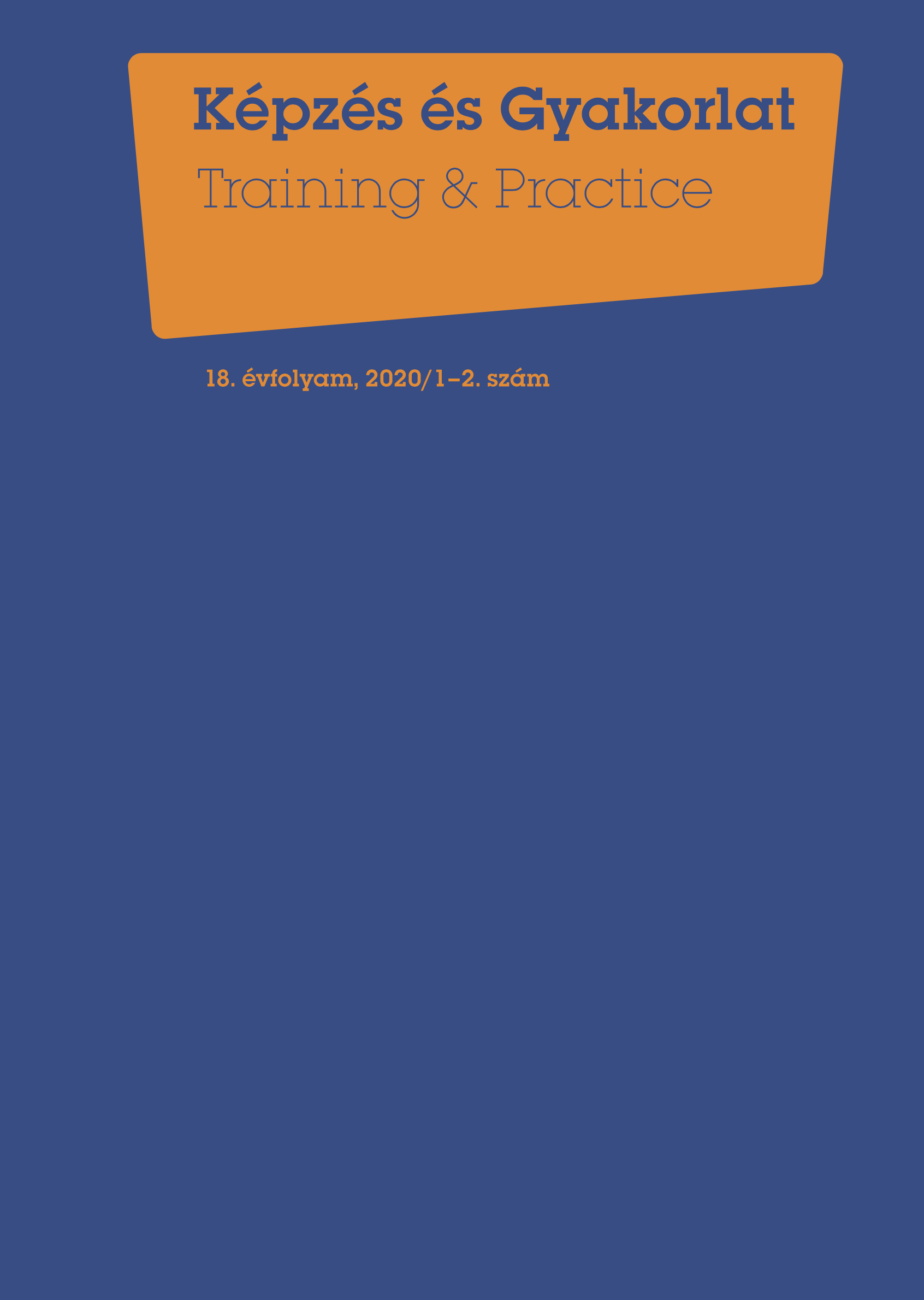Dropout risk and enrollment in higher education
DOI:
https://doi.org/10.17165/TP.2020.1-2.5Abstract
Together with a heterogeneous student society caused by the expansion of higher education and the multitudinous attendance the phenomenon of attrition has also emerged. There are many definitions of dropping out; therefore, those who leave higher education without any qualifications are considered dropouts in our study. According to the literature, there are many reasons behind the dropout such as the lack of appropriate learning methods, skills and financial resources and the inadequate integration in higher education, etc. In our paper, the possible dropout risk factors, which can occur before enrolling higher education, are being identified and analysed. The national data of the 2017 and 2018 admissions databases were used during the examination. The results show that several dropout risk factors can be detected in the admission applications, and as a Hungarian characteristic, the most significant of them all is the lack of a language certificate.
References
Berge, Z. L. & Huang, Y. P. (2004). A Model for Sustainable Student Retention: A Holistic Perspective on the Student Dropout Problem with Special Attention to e-Learning. DEOSNEWS 13 (5). [online] forrás [2019.01. 6.]
Cabrera, A. F., Nora, A., & Castañeda, M. B. (1993). College Persistence. Structural Equations Modeling Test of an Integrated Model of Student Retention. Journal of Higher Education, 64(2), pp. 123-139. DOI: https://doi.org/10.1080/00221546.1993.11778419
Fenyves, V., Bácsné Bába, É., Szabóné Szőke, R., Kocsis, I., Juhász, Cs., Máté, E., & Pusztai, G. (2017). Kísérlet a lemorzsolódás mértékének és okainak megragadására a Debreceni Egyetem Gazdaságtudományi Kar példáján. Neveléstudomány, 3. sz. pp. 5-14. http://nevelestudomany.elte.hu/downloads/2017/nevelestudomany_2017_3_5-14.pdf [2019. 03. 28.] DOI: https://doi.org/10.21549/NTNY.19.2017.3.1
Garai, O. & Kiss, L. (2014). A felsőoktatási jelentkezések tendenciáinak alakulása 2010 és 2014 között. Felsőoktatási Műhely, pp. 17-76.
Lassibille, G. (2011). Student Progress in Higher Education: What We Have Learned from Large-Scale Studies. Open Education Journal, Bentham Open, 4(4), pp. 1-8. DOI: https://doi.org/10.2174/1874920801104010001
Liskó, I. (2004). Perspektívák a középiskola után. Felsőoktatási Kutatóintézet, Budapest. Miskolci, P., Bársony, F. & Király, G. (2018). Hallgatói lemorzsolódás a felsőoktatásban: elméleti, magyarázati utak és kutatási eredmények összefoglalása. Iskolakultúra, 28. évf. 3- 4. sz. pp. 87-105.
Polónyi, I. (2014). A hazai felsőoktatási részidős képzés néhány felvételi tendenciája és rekrutációs jellemzője. Statisztikai Szemle, 92. évf. 10. sz. pp. 892-918.
Pusztai, G. (2011). A láthatatlan kéztől a baráti kézig. Hallgatói értelmezői közösségek. Budapest: Új Mandátum Kiadó.
Sáska, G. (2014). Húsz év köz- és felsőoktatásáról, körkép. Iskolakultúra, 24. évf. 2. sz. pp. 3-18.
Szemerszki, M. (2018). Lemorzsolódási adatok és módszertani megfontolások. In Pusztai, G & Szigeti, F. (szerk). Lemorzsolódás és perzisztencia a felsőoktatásban. (pp. 15-27.), Debrecen: Debreceni Egyetemi Kiadó.
Szemerszki, M. (2014). A középiskolából a felsőoktatásba. Jelentkezési és felvételi tendenciák. Felsőoktatási Műhely, 1. 47-63.
Tinto, V. (1993). Leaving college: Rethinking the causes and cures of student attrition (2nd ed.). Chicago and London: The University of Chicago Press. DOI: https://doi.org/10.7208/chicago/9780226922461.001.0001
Tinto, V. (1975). Dropouts from higher education: A theoretical synthesis of recent literature. A Review of Educational Research, 45, 89-125. DOI: https://doi.org/10.3102/00346543045001089
Vlk, A., Stiburek, S., & Svec, V. (2016). Dropout calculation and related policies in czech Higher education. Conference Paper, ERIE. 650-657.Oktatási Hivatal Statisztikák, eredmények: https://www.oktatas.hu/kozneveles/erettsegi/statisztikak_vizsgaeredmenyek [2019. 03. 28.]
FELVI Elmúlt évek statisztikái forrás [2019. 03. 28.]
Downloads
Published
Issue
Section
License
Copyright (c) 2020 Józsa Gabriella

This work is licensed under a Creative Commons Attribution-NonCommercial-NoDerivatives 4.0 International License.












